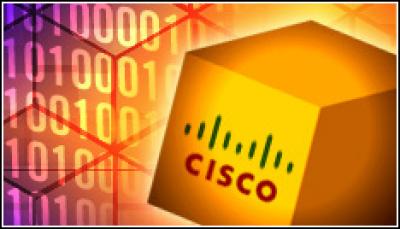Cisco Reports 17 Percent Drop In Profits

Cisco Systems reports its profits fell by almost half in the fiscal fourth quarter and sales dropped by more than 17 percent
It was a cautiously optimistic John Chambers who presented Cisco Systems’ fiscal fourth-quarter earnings.
Cisco, the dominant networking vendor that is looking to expand deeper into the data centre, reported on 5 Aug that profits had dropped 46 percent from the same period in 2008, to $1.1 billion (£650m). In addition, sales fell more than 17 percent, to $8.5 billion.
However, Chambers, Cisco’s chairman and CEO, said for the first time in several quarters the sequential growth from the third to the fourth quarter was seasonally normal, and that it could bode well for the coming months.
He and other Cisco officials said while IT spending by businesses is not growing rapidly, there are positive signs in orders when compared with earlier in the year, as the global recession was still striking with full force.
If the trend continues, Cisco officials could look back and see that “the tipping point came in the fourth quarter,” Chambers said during a conference call with analysts and journalists.
“While it’s too early to call it a recovery, there is a normal seasonal trend,” Chambers said.
Still, he said he expects fiscal first-quarter sales to drop 15 to 17 percent over the same period the previous year. However, Chambers noted that while in good economic times the year-over-year comparisons were most important, during difficult times, sequential growth is important.
Cisco saw sales declines in all areas of its business in the fourth quarter, except for services, and saw declines in most regions.
A key point for the company was cutting expenses. Chambers and Frank Calderoni, executive vice president and chief financial officer, said Cisco exceeded its annual projections during the fourth quarter by cutting more than $1.5 billion in expenses. Some of that was through cuts of about 2,000 jobs.
During a question-and-answer period, Chambers and other Cisco officials were asked about pressure on their networking business from Hewlett-Packard’s ProCurve business, and the competition they’re entering in the data center with their UCS (Unified Computing System), an all-in-one offering that includes server, storage, networking and management software in a single package.
Chambers touted the acceptance of the latest Cisco networking equipment, including the ASR 1000 and ASR 9000 core routers and Nexus 5000 and 7000 switches.
Regarding the UCS, which puts Cisco into direct competition with OEMs such as HP and IBM, Chambers said it was an $85 billion market, of which Cisco only had a fraction, so there was business to be had.
“All of a sudden, we’re a player in the data center,” he said. “Customers have responded positively to us playing there.”
The UCS is in the hands of some, or at least a few, customers currently, and Chambers said he expects the volume to grow in the second half of the year. He and other officials also noted that currently the greatest interest is coming from midsize customers, but they expect to see more interest from larger enterprises.
They also said they plan to expand the offering. Currently it’s based on Cisco-branded blade servers, but the strategy over the next few months is to roll out models with traditional rack servers.
Chambers also talked about opportunities in the over 30 “market adjacencies” that Cisco is targeting—such as transportation and energy distribution—in which the vendor is looking to offer solutions based on Cisco products.
He said he expects that number to grow beyond 30 in the next year.